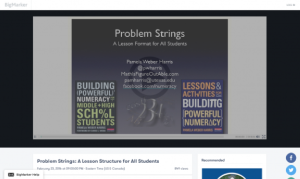 |
July 28, 2017 Volume 23, Number 30 |
Research and Education |
General Interest |
Network Tools |
In the News |
Research and EducationBack to Top | |
 |
|
 |
|
 |
|
 |
|
 |
|
 |
|
 |
|
 |
|
General InterestBack to Top | |
 |
|
 |
|
 |
|
 |
|
 |
|
 |
|
 |
|
Network ToolsBack to Top | |
 |
|
 |
|
In the NewsBack to Top | |
New Exhibit Celebrates the Interplay between Art and Science | |
|
Is It Art or Is It Science? BioArtography combines science and art at Ann Arbor Art Fair Biologist takes artistic view of science - and the results are stunning How Edward Munch's Pioneering Use of Color Science Put Art on the Road to Abstraction Art and Science Journal 12 Ways to Integrate Science and Art Princeton University is currently hosting its eighth annual "Art of Science" exhibit, which is scheduled to run through January 2018. This versatile exhibit features both aesthetically pleasing images created by scientists during the course of their research as well as pieces created by artists that are inspired by scientific concepts. This exhibit isn't the only place where folks can explore the connections between art and science this year. At the Ann Arbor (Michigan) Art Fair, which ran between July 20th and July 23rd, visitors were able to check out a number of works created by the BioArtography project. As part of this project, scientists at the University of Michigan photographed human cells and tissues (with the aide of color staining) then used photoshop to enhance these images, creating a series of gorgeous - and educational - images. Meanwhile, artist/biologist Amanda Kwieraga, who recently earned an MA in stem cell biology and regenerative medicine at the University of Southern California, is at work on a series of acrylic and ink paintings she calls "Art for Science's sake." Kwieraga reflects, "Anyone who views something under a microscope or through a telescope will tell you that science is art, and that art is the perfect way to convey science." [MMB] The first link takes readers to a review of Princeton's Art of Science exhibit, authored by artist and Columbia University chemistry doctoral student Elizabeth Bailey. Next, readers can learn more about the BioArtography project and Amanda Kwieraga's work, courtesy of Michigan's MLive and USC News. (Note that the MLive article includes a link to the BioArtography project, where visitors can view examples of these fascinating enhanced photographs). Of course, the intersection between art and science is nothing new. The fourth link takes readers to a fascinating article from Henri Neuendorf at Artnet News that reveals that Edvard Munch kept abreast of contemporary physics research about color and used this knowledge to create his vibrant paintings. Moving along, the fifth link takes readers to the homepage for the Art and Science Journal, a Toronto-based publication that "focuses on artworks concerned with science, nature, and technology." Finally, readers will find a number of creative, hands on projects for young artists and scientists to pursue, compiled by art education blogger Cindy Ingraham. | |





